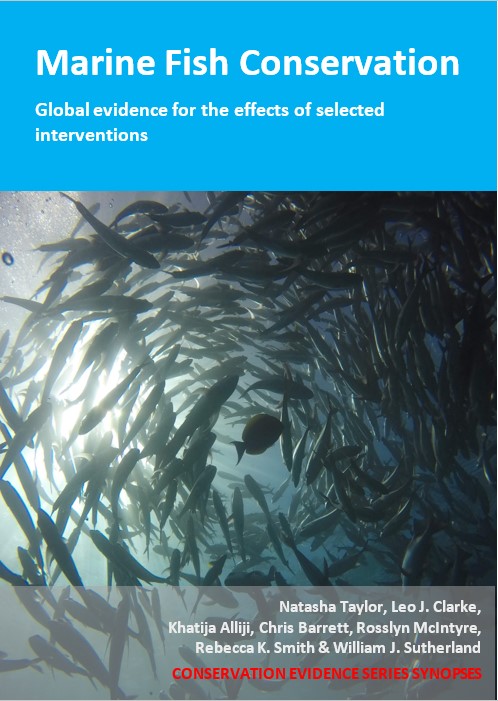Fit a moving device to a trawl net to stimulate fish escape response (stimulator device)
-
Overall effectiveness category Awaiting assessment
-
Number of studies: 3
View assessment score
Hide assessment score
How is the evidence assessed?
-
Effectiveness
not assessed -
Certainty
not assessed -
Harms
not assessed
Study locations
Supporting evidence from individual studies
A replicated, controlled study in 2009 in laboratory facilities in Tongyoung, South Korea (Kim & Whang 2010) found that trawl net codends fitted with moving devices to stimulate fish escape response (active stimulating devices) increased the escape of immature red seabream Pagrus major compared to conventional trawls, and the effect was influenced by mesh size and light level. In a 28 mm mesh codend, fewer immature seabream were retained with a stimulating device than without in dark and bright conditions (dark: 74 vs 83%, bright: 80 vs 87%). However, there was no statistical difference in dim light (device: 66, without: 82 %). For a 43 mm mesh, the codend with a stimulating device retained fewer seabream than a conventional codend in all light conditions (dark: 78 vs 87%, dim: 46 vs 65%, bright: 37 vs 49%). In 2009, groups of immature seabream were released into 40 cm diameter codends (28 mm or 43 mm mesh size) in a laboratory tank. For each mesh size, codends with and without one of two active stimulating devices (fluttering panels of netting, 60 x 40 cm; and an array of 11 ropes, 70 cm long) were tested at one of three light conditions (dark, dim, bright). Each trial was repeated 10 times for random groups of fish (120 trials) with 200 fish released into the codend each time.
Study and other actions testedA replicated, controlled study in 2012 of a seabed area in the Arkona Basin, western Baltic Sea, Northern Europe (Herrmann et al. 2015) found that only one of three designs of moving devices to stimulate fish escape response (active stimulating devices) fitted to trawl net codends in tandem with a square mesh escape panel improved the size selectivity of cod Gadus morhua compared to a codend without a device. The length at which cod had a 50% chance of escaping (selection length) was greater with float ropes as the stimulating device, for two different sizes of catch (200 kg: 36.7 cm, 700 kg: 38.3 cm) compared to the two other devices (fluttering rope and inclined panel) and without a device, which did not differ from each other (200 kg: 29.5 cm, 700 kg: 31.0 cm). Experimental fishing trials were done in March/April and September 2012. Deployments were made of four identical codends with a 120 mm top square mesh escape panel in the front of the codend and with or without an active stimulating device. Three codends with devices were tested: fluttering ropes (8 tows), an inclined panel (5 tows) and float ropes (3 tows), and one without (11 tows). See paper for gear specifications. A cover mounted over each codend collected the escaping cod. Catches from both codends and covers were sorted, and cod length and number recorded.
Study and other actions testedA replicated, controlled study in 2012 at an experimental tank facility in Tongyoung, South Korea (Kim 2015) found that trawl net codends fitted with moving devices (two types) to stimulate fish escape response (active stimulating devices) increased the escape of young red seabream Pagrus major compared to conventional codends, but for young olive flounder Paralichthys olivaceus they were only effective when used in combination with an additional device that generated an active shaking motion of the net. For seabream, overall escape rates from the codend were higher with a stimulator device than without (with: 40–62%, without: 13–43%), but there was no difference for olive flounder (with: 55–88%, without: 60–87%). However, for both species the escape rates were greater in codends, with or without stimulator devices, fitted with another device that made the nets shake (seabream, shaking: 38–62%, steady: 13–40%; flounder, shaking: 55–63, steady: 85–88%), with the exception of seabream in a shaking codend with stimulator device at the faster of two flow rates (shaking: 38%, steady: 32%). In October 2012, seven separate experiments were done in circular water tanks to test a new method (shaking of the codend generated by a cap-like canvas fitted at the end) of increasing the escape of young fish from three types of codend: two with active stimulator devices (a fluttering flag-like netting panel and a double conical rope array – see paper for specifications); and one conventional codend without a device. In each experiment, a group of 200 hatchery-reared fish were released into the water flow at the front of the codend and the number of fish retained/escaped were recorded. Three flounder experiments with all three types of codend and shaking or steady motion were tested at the same water flow rate (0.6 m/s). For seabream, a conventional codend and a net stimulator device were each tested at two different water flow rates (0.5 and 0.7 m/s).
Study and other actions tested
Where has this evidence come from?
List of journals searched by synopsis
All the journals searched for all synopses
This Action forms part of the Action Synopsis:
Marine Fish Conservation





)_2023.JPG)














